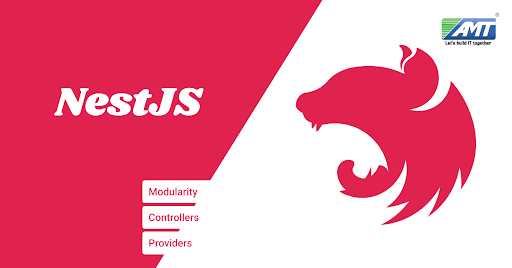NestJS is a popular open-source framework for building efficient, scalable, and maintainable server-side applications using Node.js. It provides a set of tools, patterns, and modules that facilitate the development of robust and well-structured applications. NestJS takes inspiration from various programming paradigms and design patterns, including but not limited to Angular, TypeScript, and object-oriented programming.
Key features and concepts of NestJS include:
- Modularity: NestJS encourages the use of modules to organize code into reusable, encapsulated components. Modules define a cohesive set of related functionality, making the application easier to manage and maintain.
- Dependency Injection: NestJS uses dependency injection to manage the instantiation and injection of application components. This promotes loose coupling and better testability of code.
- Controllers: Controllers handle incoming HTTP requests and are responsible for routing the request to appropriate service methods. They define routes, route handlers, and request/response objects.
- Providers: Providers are classes that can be injected into controllers, services, and other providers. They encapsulate the business logic of your application and can be reused across different parts of the application.
- Services: Services are responsible for handling business logic and data manipulation. They can be injected into controllers or other services.
- Middleware: Middleware functions can be used to intercept and modify incoming requests and outgoing responses. This allows for tasks like authentication, logging, and error handling.
- Pipes: Pipes are used for data validation and transformation. They can be applied to request payloads to ensure that the incoming data is valid and properly formatted.
- Guards: Guards are used to protect routes and restrict access based on certain conditions, such as user authentication or authorization.
- Interceptors: Interceptors can be used to modify the input/output of methods in controllers and services. They are useful for tasks like logging, caching, and response transformation.
- Decorators: Decorators are a TypeScript feature that NestJS extensively utilizes. They allow you to attach metadata to classes, methods, properties, and parameters, which NestJS uses for various purposes such as routing and dependency injection.
- CLI: NestJS comes with a powerful command-line interface (CLI) that helps you generate modules, controllers, services, and other application components with ease.
- Support for TypeScript: NestJS is built using TypeScript, which provides static typing and enhanced tooling support, making the development process more efficient and error-resistant.
NestJS can be used to build a variety of applications, including RESTful APIs, GraphQL APIs, microservices, and more. Its modular and organized architecture makes it a great choice for both small and large-scale projects.
Above is a brief about Nest.JS. Watch this space for more updates on the latest trends in Technology
